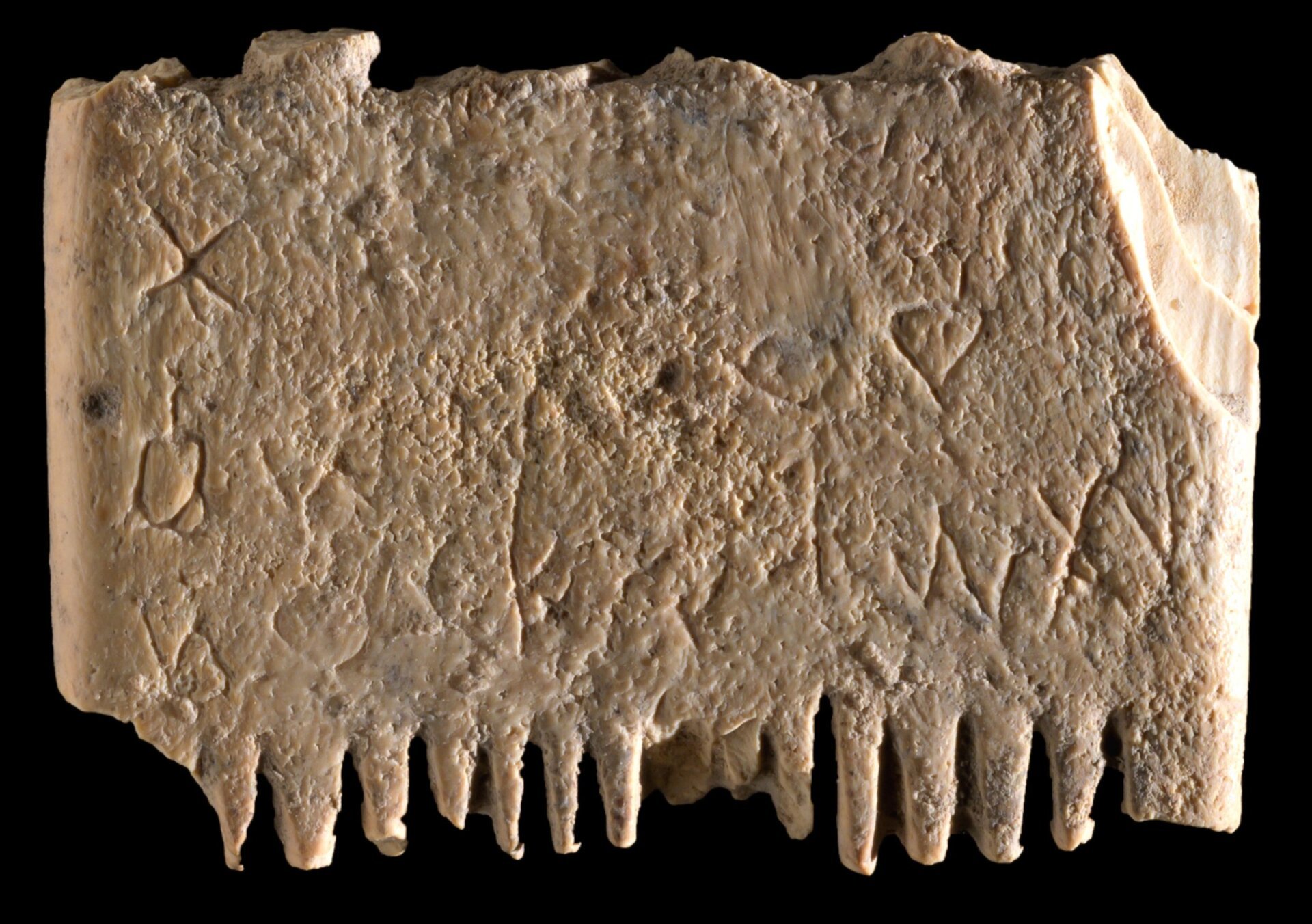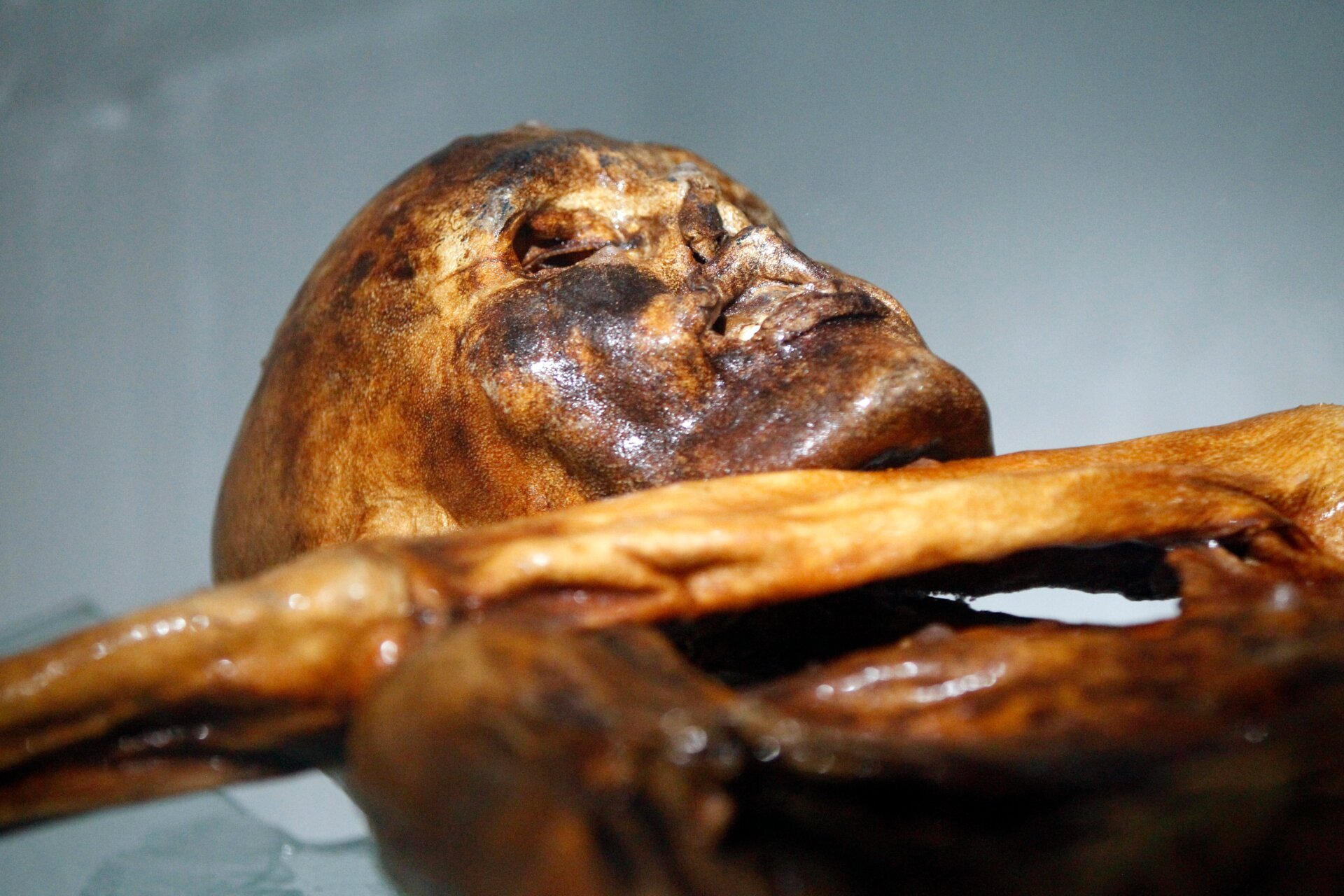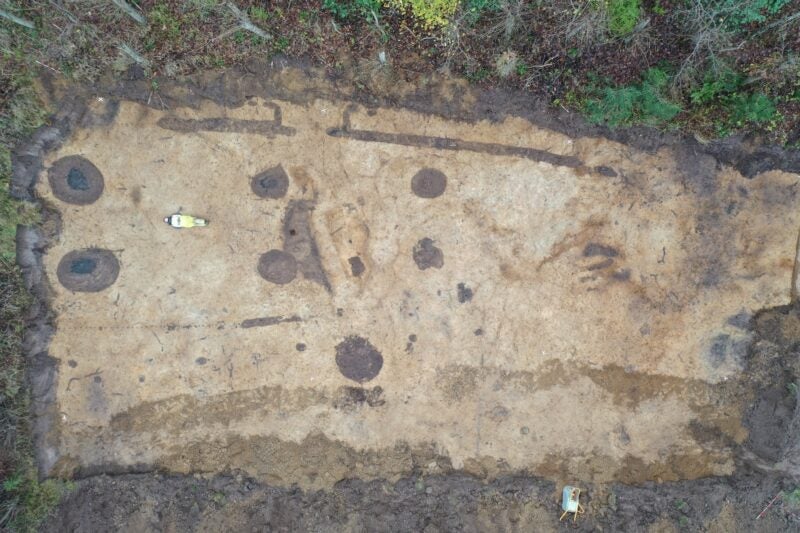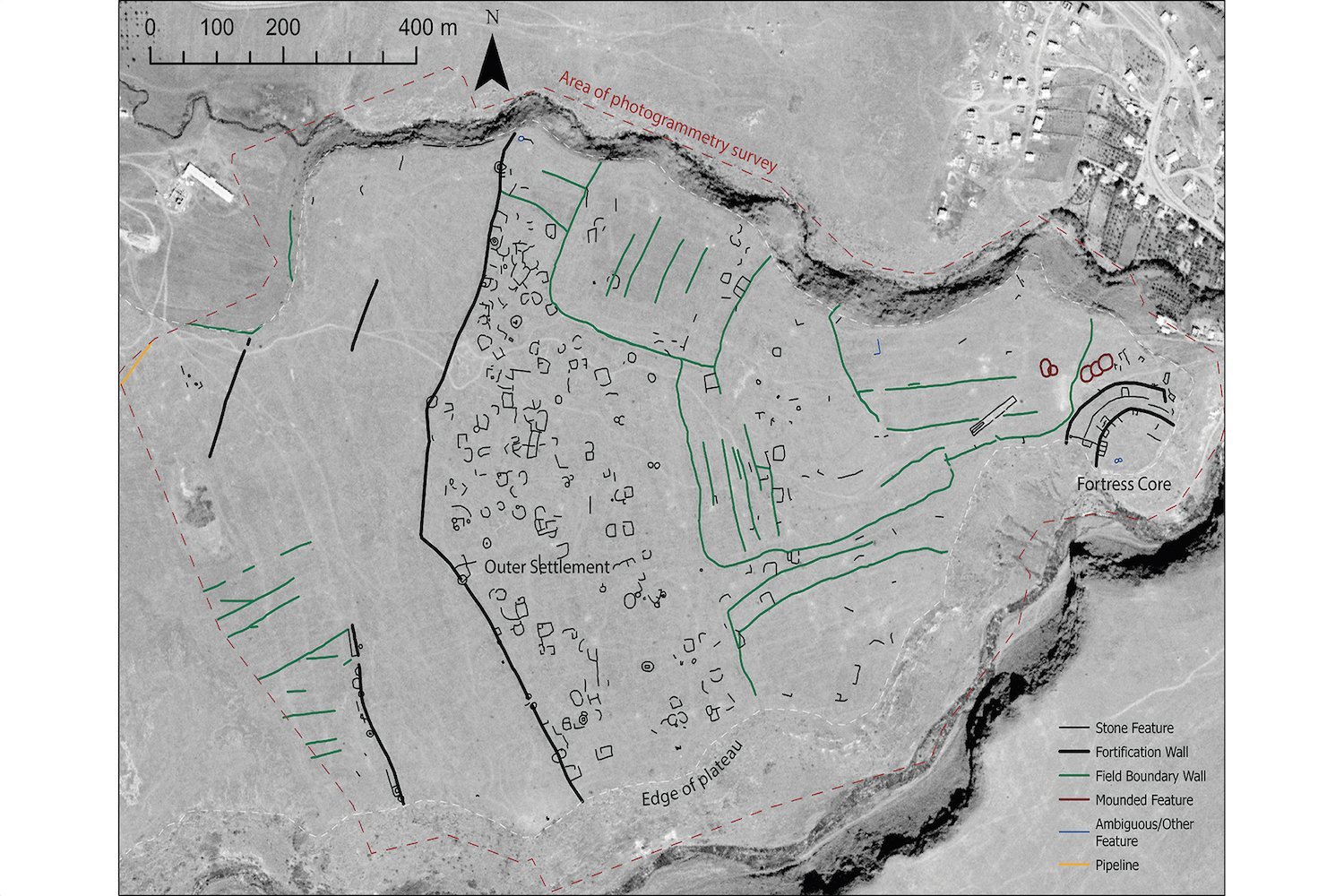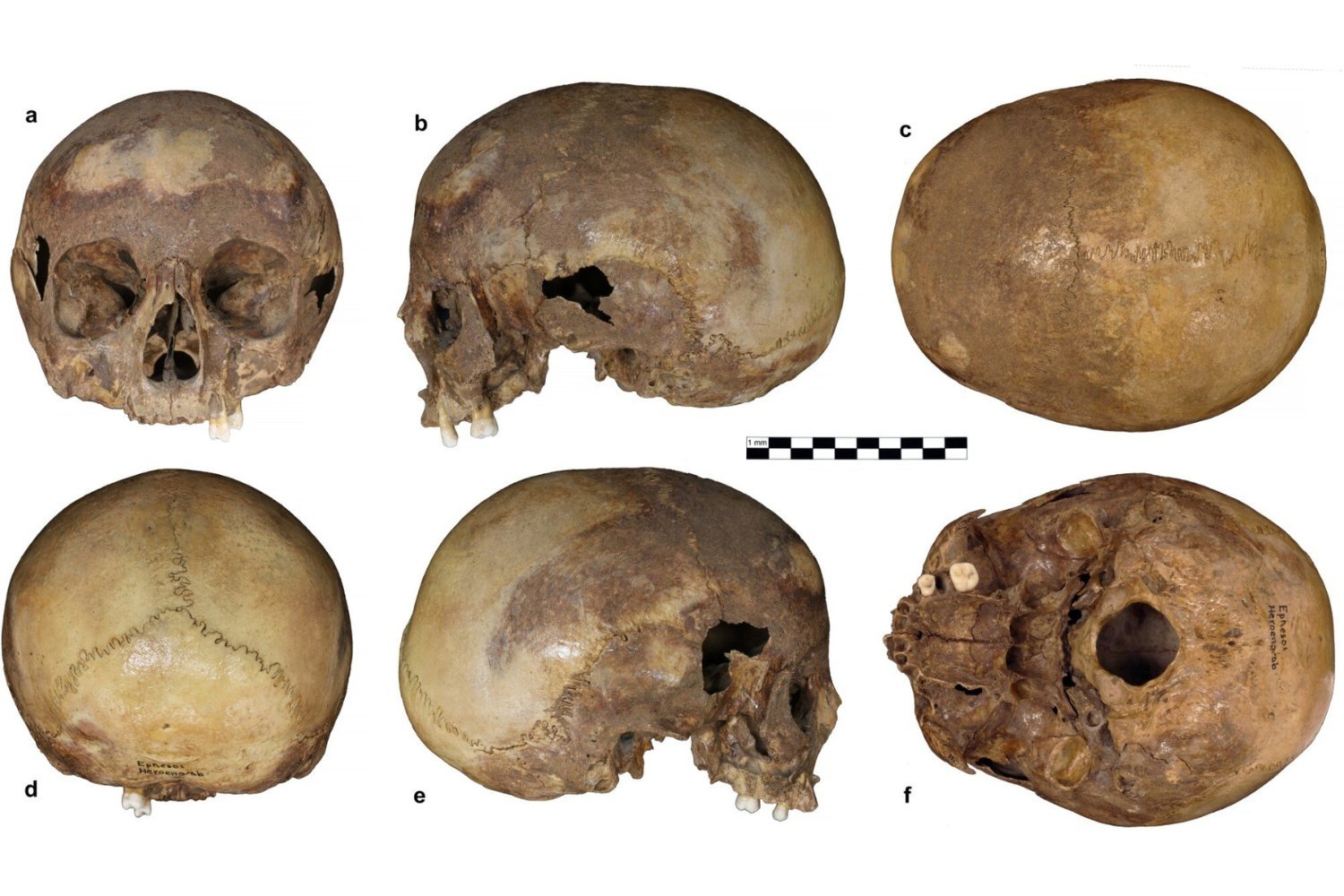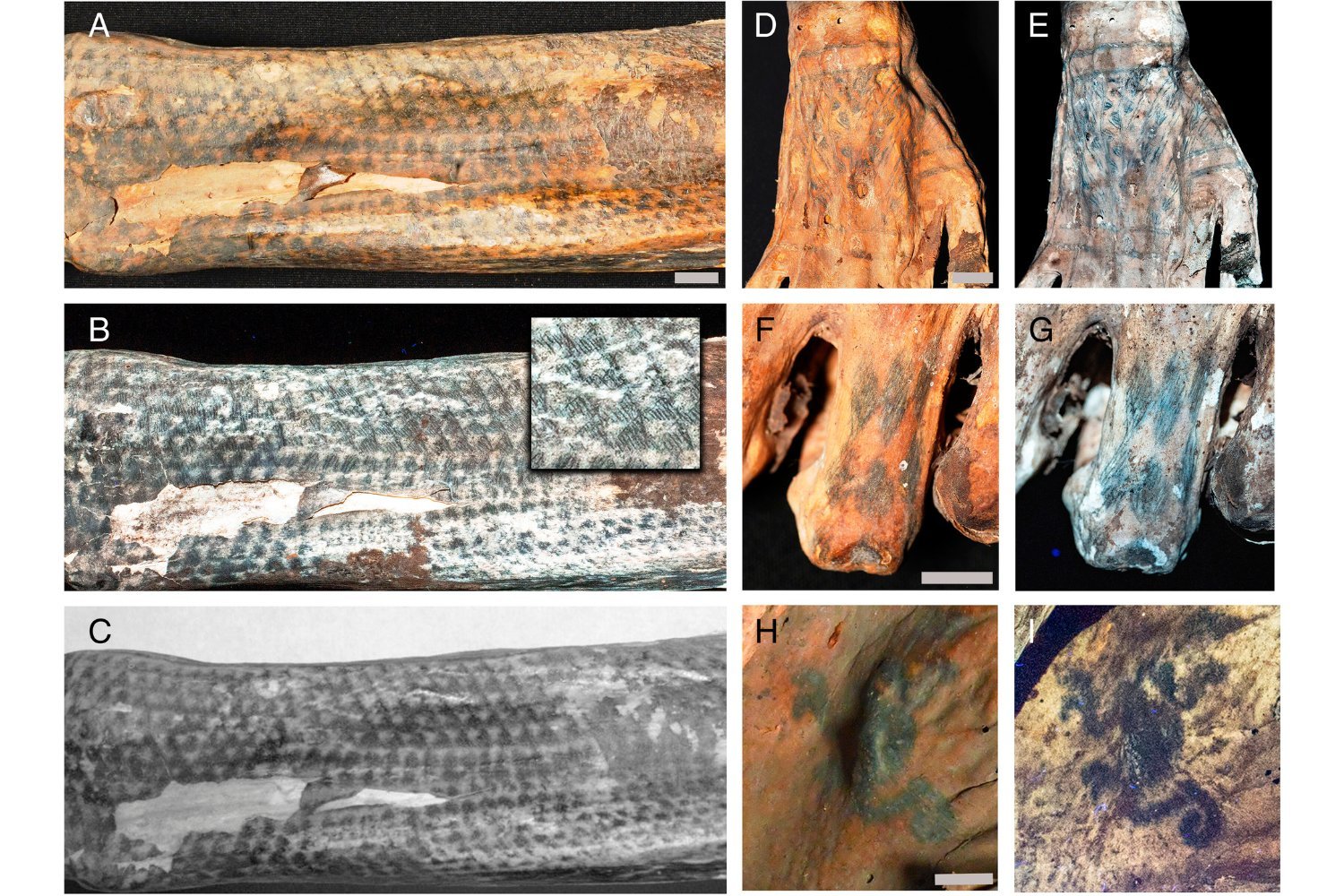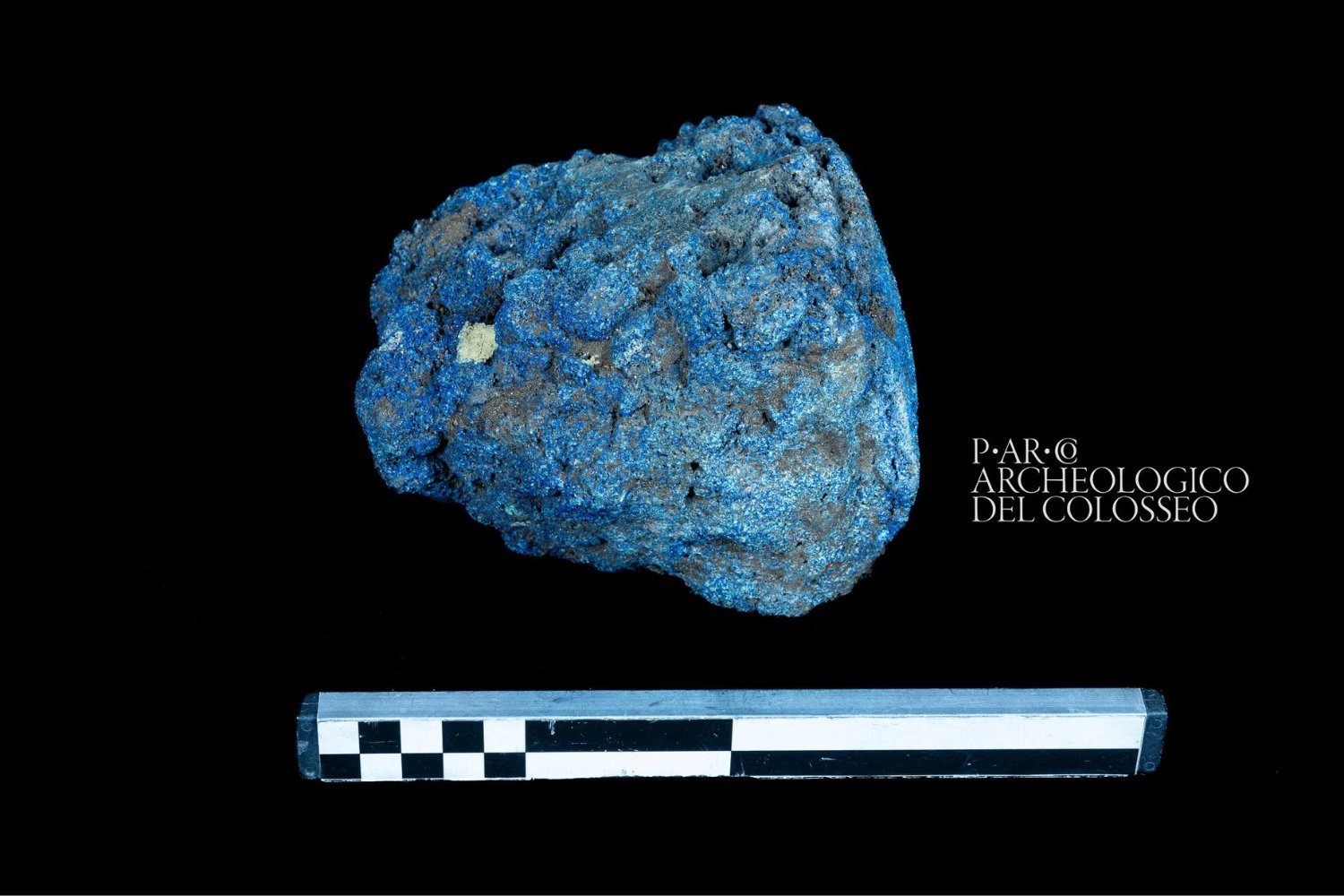The earliest known sentence written in the Canaanite language has been unearthed in Israel, etched onto a humble ivory comb. This remarkable find provides a fascinating glimpse into the daily life and language of the region’s ancient inhabitants. The seven-word inscription, comprising 17 Canaanite characters, translates to: “May this tusk root out the lice of the hair and the beard.”
This discovery pushes back our understanding of written Canaanite, a script that eventually evolved into the alphabet widely used today. Previously, Canaanite inscriptions had been found, but never a complete sentence. The comb, carved from an elephant tusk, measures a mere 1.38 inches by 0.98 inches and was discovered at Tel Lachish, a prominent Bronze Age settlement located approximately 25 miles from Jerusalem. Details of this significant discovery, including the script’s characters and meaning, have been published in the Jerusalem Journal of Archaeology.
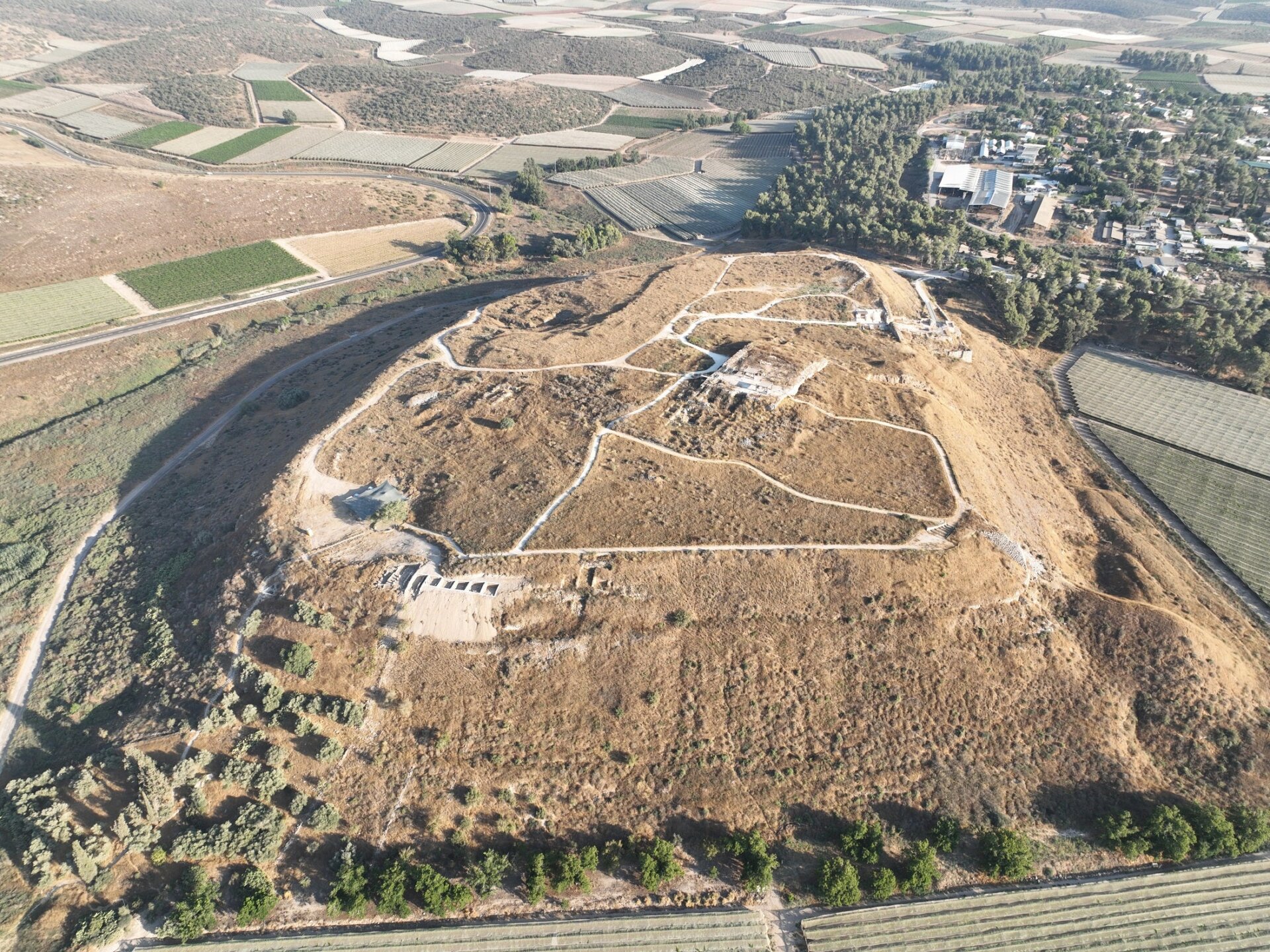 Alt text: Close-up of the Canaanite inscription on the ivory comb, revealing the ancient characters and their arrangement.
Alt text: Close-up of the Canaanite inscription on the ivory comb, revealing the ancient characters and their arrangement.
According to Yosef Garfinkel, an archaeologist at the Hebrew University of Jerusalem and co-author of the study, this is the first complete Canaanite sentence found in Israel. While Canaanite inscriptions exist from Ugarit in Syria, they employ a different script. The discovery at Tel Lachish represents a significant breakthrough in understanding the development of alphabetic writing. Garfinkel’s team believes the comb was likely crafted in Egypt and later brought to Tel Lachish, where a local resident inscribed the anti-lice plea. This suggests the widespread use and understanding of Canaanite script across the region.
 Alt text: Aerial view of the Tel Lachish archaeological site, showing the excavated areas and surrounding landscape.
Alt text: Aerial view of the Tel Lachish archaeological site, showing the excavated areas and surrounding landscape.
Tel Lachish, now an Israel Nature and Parks Authority site, thrived as a bustling urban center for approximately 600 years, from 1800 BCE to 1150 BCE. While the comb itself was unearthed during excavations in 2017, the significance of the inscription was only recognized this year. Like modern lice combs, the ancient Levantine comb features teeth on both sides: thicker teeth for detangling hair and finer teeth for removing lice and their eggs.
Microscopic analysis revealed the remnants of head lice on the comb’s teeth, offering a tangible connection to the daily hygiene practices of people living thousands of years ago. This discovery adds a personal touch to the story, highlighting the comb’s practical use and the universal human experience of dealing with pests. Tel Lachish has proven to be a rich source of Canaanite inscriptions, boasting ten discoveries so far, more than any other site in Israel.
This discovery highlights the importance of ongoing archaeological research and the potential for uncovering more hidden treasures from the past. The discovery of this seemingly mundane object offers invaluable insight into the language, culture, and daily life of the Canaanites. It also underscores the significance of Tel Lachish as a key site for understanding the development of written language. While this discovery provides a remarkable glimpse into the past, it also begs the question: what other secrets lie waiting to be unearthed? Perhaps future excavations will reveal further examples of Canaanite writing, shedding even more light on this pivotal period in human history.



